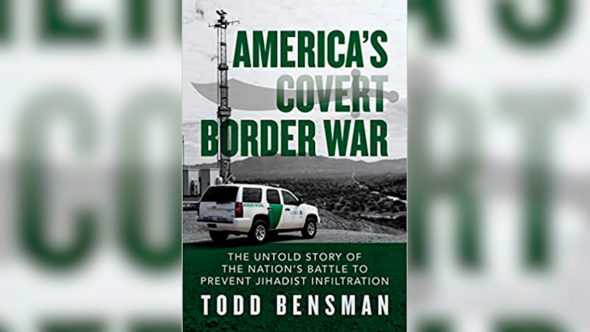Terrorists Are Crossing America’s Porous Borders And Biden Is Making It Worse

Originally published by the Federalist
A new book by journalist Todd Bensman, ‘America’s Covert Border War,’ provides alarming details on a national security threat that isn’t being addressed.
During the 2016 election, one of the major issues the media refused to discuss was the extent to which foreign-born nationals might play a role in jihadist terror attacks on U.S. soil. This was during the height of the debate over the admission of Syrian refugees and against the backdrop of the migrant crisis and subsequent terror attacks in Europe. (Indeed, there are signs the recent mass shooting on a grocery store in Colorado may have been an Islamist terror attack – the shooter was a Syrian refugee who came here as a child and was a U.S. citizen.)
But given that a key plank in Donald Trump’s platform was the insistence on building “a big, beautiful wall” to keep out potential terrorists, among other threats, the last thing the media wanted to do was admit that terrorism was a potential consequence of a porous border. So the media mercilessly mocked and derided claims that foreign terrorists might seek to cross a largely open border as the fever dreams of xenophobic rubes.
The irony was that America’s intelligence and counterterrorism officials were all too aware of the cross-border threat. After 9/11, with bipartisan support, the U.S. government built an expansive covert intelligence system intended to detect and intercept this very real threat. It is worth keeping this backdrop of media silence in mind to contrast against while reading Todd Bensman’s America’s Covert Border War: The Untold Story of the Nation’s Battle to Prevent Jihadist Infiltration.
‘Special Interest Aliens’
Bensman’s background is as a journalist of the old-school, back when the cardinal rule of journalism was to go to the place news happens, then accurately tell people what you learned. He worked the national security beat at regional newspapers like the Dallas Morning News and played a major role in breaking a number of key stories, including the federal investigation of the Holy Land Foundation, which became the largest terrorism finance trial in American history. The Dallas Morning News later bent the knee to Islamist pressure groups angry over Bensman and his fellow investigative journalists’ coverage of the story.
Bensman left journalism to join the Texas Department of Public Safety as a counterterrorism analyst, showing that good reporters really can develop the kind of subject matter expertise that media talking heads often claim but rarely demonstrate. While there, Bensman worked alongside a variety of federal agencies in the state’s fusion center, helping secure the Lone Star state and its long border with Mexico from drug cartels, criminal aliens, and, yes, even terrorists.
Here Bensman was exposed to the interworking of an intelligence system – with U.S. officials stretching from Quito, Ecuador to Washington, D.C. – singularly focused on the task of keeping potential jihadist terrorists from illegally crossing the border. In classic government jargon, the border-crossers of concern were “Special Interest Aliens (SIAs)” from a shifting assortment of countries where the threat of international terrorism was high and cooperation from local governments was limited or non-existent. A recent example is 11 Iranians caught crossing the border into Yuma, Arizona.
- Mr. President, deputize your local sheriffs - November 8, 2024
- Bureaucrats versus the swarm - October 18, 2024
- There is only one jihad - September 13, 2024
